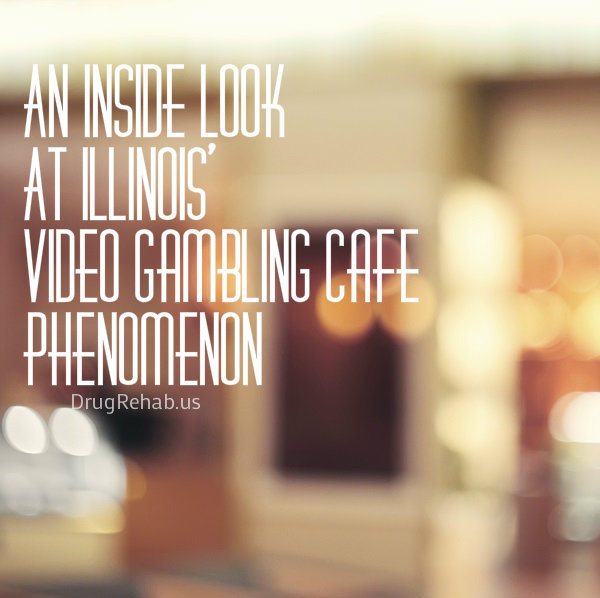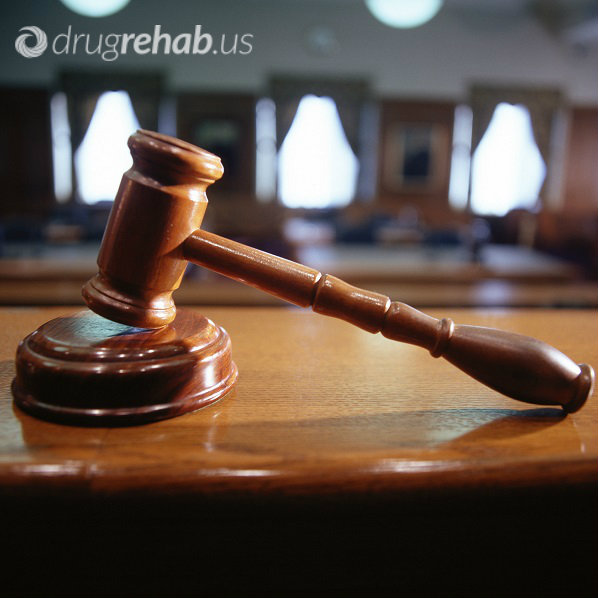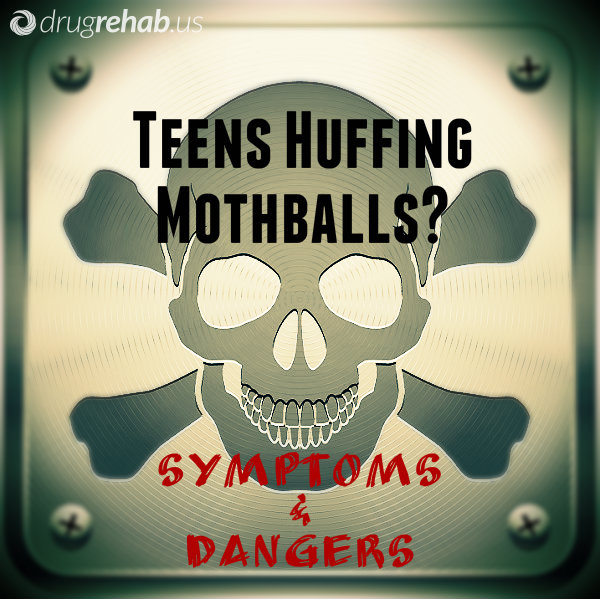Any drug court that hopes to obtain federal funding will have to allow addicts access to drug replacement therapies for heroin and prescription opioid addiction, the U.S. government has ruled.
Treatment programs that practice abstinence-only therapies will still remain perfectly acceptable in most cases, but when doctors recommend drug maintenance as the best alternative for individual defendants, drug court judges will have to respect that opinion.
Changes In Addiction Rehab Policy
These changes in existing policy were announced in February by Michael Botticelli, director of the White House Office of National Drug Control Policy. Previously it had been left to the discretion of drug court judges to decide which types of rehabilitation and treatment were appropriate, and these institutions have a long history of rejecting drug replacement strategies. In Kentucky, there are signs posted outside drug courts instructing defendants in methadone or Suboxone maintenance programs to wean themselves off of these drugs before their court dates if they want to avoid being sent to prison.
Maintenance Programs More Effective Than Conventional Abstinence-Based Programs?
But the latest evidence strongly suggests drug maintenance programs, particularly those that rely on Suboxone as a replacement drug, are extremely useful and do an excellent job of helping opioid addicts stay away from the substances that endanger their lives. Abstinence-based treatments in general are more effective against alcoholism than against heroin and OxyContin addiction, which cause changes in the brain that can be incredibly difficult to overcome when relying on willpower alone.
 Studies show more than 90 percent of heroin and opioid painkiller addicts will relapse back into drug use within a year of conventional rehabilitation, with the majority dropping out of treatment programs before reaching the end. In some cases, this may show a lack of commitment, but it is still data that treatment centers cannot afford to ignore.
Studies show more than 90 percent of heroin and opioid painkiller addicts will relapse back into drug use within a year of conventional rehabilitation, with the majority dropping out of treatment programs before reaching the end. In some cases, this may show a lack of commitment, but it is still data that treatment centers cannot afford to ignore.
Even outside structured treatment programs, Suboxone is extremely popular with opioid addicts, so much so that a thriving underground market for the drug exists among those looking to self-medicate themselves out of their drug habits. But only 2.5 percent of physicians across the United States have gone through the certification process necessary to prescribe this maintenance medication, helping to repress the availability of the drug.
Most physicians and treatment experts don’t recommend Suboxone or methadone maintenance therapy for opioid addicts, preferring to stick with what they see as the tried-and-true methods of abstinence and the drug-free lifestyle. Substitution drugs go against the grain, maintaining a state of addiction despite their abilities to decrease cravings and reduce the opioid high.
But plenty of studies have verified the relative safety of drug maintenance therapy. At the present time, prescription opioid painkillers plus heroin overdose take the lives of about 25,000 Americans each and every year, and the number of victims has increased exponentially over the last 10 to 15 years. Relapse following unsuccessful treatment is a common killer in these cases, because opioid addicts who go back to using after a period of abstinence have reduced tolerance for drugs and can overdose easily if they take the same dosages they did in the past.
Benefits Of Drug Maintenance Therapies
The reliance of drug courts on abstinence-based rehabilitation is understandable, given the fact that drug maintenance therapy does replace one type of opioid addiction with another. But having one addiction kill the other can play a constructive healing role for desperate individuals who lack the capacity to beat their drug dependencies without extra help.
Willpower is an important part of any addiction recovery regime, and all addicts who plan to get better must make a determined effort to overcome the brain disease that plagues them. Opioid addicts undergo significant neurological changes that won’t go away overnight, however, and that is why drug maintenance can help bridge the gap between dependency and recovery.
Ideally, addicts who use methadone or Suboxone will eventually be able to wean themselves off of these substances under medical supervision. But until they do, these drugs can keep them alive, still in a position to win a battle against addiction that can so easily end in tragedy if intervention is unsuccessful.
Drug courts can provide a route to recovery for addicts only if they remain open to all possibilities, including those that may seem a bit outside the box. The new federal government policy may force their hand to a certain extent, but is will also help raise the consciousness of drug court judges who have a responsibility to keep up with the times.
Read Our Latest News Blogs
Since video gambling in Illinois became legal, the state’s neighborhoods, retail districts and shopping malls have been invaded by a new type of gambling establishment—the video gambling café. Unlike bars and restaurants that provide a few video slot machines for their customers’ convenience or to supplement the main business, video gambling cafés are a stripped down no-frills version of the casino that exist solely to make money off of people’s passion for electronic games of chance.
When politicians in Illinois got the idea to legalize video gambling machines, their primary purpose was to give a boost to neighborhood taverns and local restaurants struggling under the weight of the economic downturn. Of course they were also looking for new revenue streams, and they knew expanded gambling would swell the state’s tax coffers more prodigiously than spring melting floods the Mississippi River.
 Illinois’ Video Gaming Act of 2009 authorized the placement of up to five video slot machines or gaming terminals in truck stops, veteran facilities, fraternal establishments and retail outlets licensed to serve alcoholic beverages for immediate consumption. It took a while for the new law to be put into application (three years, to be precise), but when video gambling finally came online, a new type of gambling operation barged onto the scene and threw its chips into the pot.
Illinois’ Video Gaming Act of 2009 authorized the placement of up to five video slot machines or gaming terminals in truck stops, veteran facilities, fraternal establishments and retail outlets licensed to serve alcoholic beverages for immediate consumption. It took a while for the new law to be put into application (three years, to be precise), but when video gambling finally came online, a new type of gambling operation barged onto the scene and threw its chips into the pot.
Originating from mysterious locations far outside the Illinois border, these gambling entrepreneurs applied for liquor licenses in Illinois municipalities eager for business expansion. After their requests were granted—as they almost always were—the video gambling café phenomenon truly took off.
Video Gambling Cafés Surging
The numbers are changing every day, but according to one recent report, there are more than 1,250 video gaming machines ensconced in 280 cafés across the Prairie State. And that estimate doesn’t include the applications for café licenses that are pending in the 40-plus Illinois counties that have granted café operators permission to set up shop.
To meet the requirements of the law, video cafés must serve food. But their offerings are sparse in comparison to bars (with strict drink limitations often enforced), and the vast majority of their income is gained from the operation of their video slot machines.
Video Gambling Cafés’ More “Wholesome” Impression
The cafés advertise themselves as a “wholesome” alternative to bars, featuring a pure, unadorned gambling experience appropriate for all men and women of legal age.
To present a benign image, most of the cafes have chosen names like “Dottie’s,” “Penny’s,” “Stella’s,” “Annie’s” or “Emma’s,” perhaps intending to give the impression that café owners are sentimental sweethearts who chose to name their businesses after their moms.
Not as glitzy and glamorous as the typical Las Vegas gambling venue (and not nearly as big), most video gambling cafés have been humbly plopped down in shopping malls or alongside other small locally owned neighborhood businesses.
Simple frontage and unassuming décor complement this modest comportment, helping portray the video gambling café as a quieter, more casual and more affordable option for those repelled by the money-grubbing flashiness of the traditional casino.
Video Gambling Cafés’ Huge State Profits
So far, the understated stylistic choices of the video gambling cafés have proven to be a fabulous success. These establishments are already grossing in excess of $100 million annually, and are responsible for about 7 percent of the state’s legal gambling profits.
Since these businesses are taxed, they are helping to fill depleted government treasuries. But they are stealing customers away from the bars, clubs and restaurants that were the intended target of the original legislation and helping spread gambling farther and faster than was ever anticipated.
Most of the cafés are owned by out-of-state interests that divert profits to far-off locations, infuriating community and political leaders and creating a sense of urgency among those who want to rein in these slick operators.
And while no studies have yet been performed to see what effects their presence might be having on pathological gamblers, having so much temptation so close at hand (most of these cafés are adjacent to or actually in residential neighborhoods) must be undermining the attempts of many to overcome their addictions.
Lake County Reaction
In Lake County, just north of Chicago, new rules have been passed requiring liquor license holders with video slot machines to gross at least 60 percent of their revenue from food and drink sales. Additionally, these businesses may not dedicate more than 10 percent of their floor space to video gambling.
These restrictions will inevitably mean the end for prospective video gambling entrepreneurs looking to set up shop in Lake County, since their cafés could not possibly hope to meet these exacting and clearly discriminatory standards.
It remains to be seen if other Illinois counties will follow the example set by Lake County. But it seems highly probable, especially in areas where public opinion isn’t so keen on endlessly-expanded gambling. But as long as these cafes have a significant customer base, they will likely remain a fixture on the Illinois gambling scene, even if their numbers are restricted in the future.
Is Your Partner A Compulsive Gambler? – Learn The Early Warning Signs Now
It would seem that negatives to recreational drugs would be obvious and overwhelming, but voters in several states have now approved legal, recreational marijuana. Medical marijuana is legal in nearly half of the 50 states, but allowing recreational use of the drug is a completely different matter. Washington, Oregon, Colorado, Alaska and the District of Columbia have made the vote for legal, recreational pot. According to many opponents of the votes, these states have made a big mistake.
Why Voters Approve Legal Marijuana
 Marijuana remains illegal for recreational use according to the federal government, but states are asserting their rights and putting the legality of the drug to the vote.
Marijuana remains illegal for recreational use according to the federal government, but states are asserting their rights and putting the legality of the drug to the vote.
Those voters who have approved the legalization have a number of reasons for doing so and feel that they outweigh the obvious disadvantages of legalizing marijuana.
Some simply want to be able to use the drug without breaking the law.
Others see it as a good source of revenue for the state.
Many also see it as a way to reduce prison populations.
The Cons Of Recreational Marijuana Legalization
While the upside reasons to legalizing pot can sound pretty convincing, they completely ignore the obvious downsides. The overwhelming reasons to not allow legal marijuana are related to public health and the health of individuals. Marijuana is a mind-altering, addictive drug. Too many people forget this fact and falsely assume that marijuana is not that detrimental to health simply because it isn’t as bad as heroin, meth or cocaine.
Regular marijuana use leads to addiction in about 10 percent of those who partake. There are more people in rehab for marijuana addiction than for any other single drug. Even without addiction, marijuana use is detrimental to health. Smoking pot can cause lung conditions and memory loss. Using pot can also lead to accidents. Driving under the influence of marijuana is dangerous and there is no way yet to accurately determine when someone is too impaired to drive.
Of all the cons of legalizing marijuana, perhaps the most serious is the effect it could have on young people. Teens with developing brains stand to suffer the most from using this drug, and while laws will ban them from using it, everyone knows that legalizing the drug will only increase access for young people.
Currently, alcohol is the most commonly abused substance by teens because it is the easiest substance to get. With legalization, access to pot will only increase. Teens who smoke pot regularly risk causing permanent damage to their brains, including memory impairment and a lower IQ. Teens are also at a greater risk than adults of becoming addicted to marijuana.
Legalization of recreational pot is a reality that we must now face. With four states and D.C. voting for legalization and more states likely to follow suit, the negative consequences are likely to start appearing. If you have a teen in the home, be sure to have a talk about the dangers of using marijuana. Many people, especially teens, fail to recognize the risks taken when using marijuana.
How Many People Use Medical Marijuana? – Find Out The Truth Now!
16 Apr 2015
Yes, People Really Do Get High On Mothballs
It sounds ridiculous, but it’s true: there is such a thing as mothball abuse. It’s mostly abused by teens, which are at the right age for trying stupid things. As silly as it seems to be sniffing the fumes coming from mothballs, the risks and the dangers are real and serious.
Teens that engage in this behavior are at risk for some pretty worrying health problems. If you have a teenager at home and mothballs in the closet, bring up the issue and make sure the consequences of abusing this household product are serious.
The Mothball High
 Teens are famous for coming up with new and inventive ways to get high. These strategies typically involve some household product because access is easy. Huffing is a common way for teens to get high, and most parents don’t even think about it. Huffing refers to the practice of inhaling fumes from a household product in order to get high. The list of inhalants used is long and includes paint, nail polish remover, hairspray, scented markers, correction fluid and even mothballs.
Teens are famous for coming up with new and inventive ways to get high. These strategies typically involve some household product because access is easy. Huffing is a common way for teens to get high, and most parents don’t even think about it. Huffing refers to the practice of inhaling fumes from a household product in order to get high. The list of inhalants used is long and includes paint, nail polish remover, hairspray, scented markers, correction fluid and even mothballs.
Mothballs are solid balls that give off an odor that deters moths. They protect your clothes from the insect. The odor comes from a substance in the mothball that turns from a solid into a gas that can be inhaled. Teens sniff mothballs like a drug to get high. The substance that gives them this high is either naphthalene or dichlorobenzene. Older mothballs tend to contain the former, while newer products have the latter. Both can get you high and are harmful to inhale.
Is Napthalene Addiction Dangerous For Health?
Huffing mothballs is dangerous. Most teens won’t do it often enough to get addicted, but addiction is possible. What is more likely is that teens inhaling the fumes will experience health problems.
Symptoms Of Inhaling Mothballs
The most common and immediate symptoms of inhaling mothballs include the following:
- lightheadedness and dizziness
- nausea
- vomiting
- stomach pains
- headaches
- eye and airway irritation
- slurred speech
- loss of coordination
- mental impairment
- weakness in the limbs
- scaly skin rash
Long-term Consequences Of Mothball Abuse
There are also some very serious long-term consequences of mothball abuse. Teens who huff mothballs several times put themselves at risk for excessive:
- weight loss
- anemia
- liver failure
- kidney failure
- and even seizures and coma
The effects of abusing mothballs with naphthalene are similar to those with dichlorobenzene. Dichlorobenzene is less toxic than naphthalene, which is why newer mothballs are made with it, but it can still cause the same symptoms and the same lasting damage to the body.
Talk To Your Teen About Mothball Huffing…NOW!
Mothballs made the news several years ago when teenagers in France were hospitalized for huffing them. The twin sisters were seriously impacted by their drug habit and one of the two needed a full six months to recover.
While cases like these bring exposure to a dangerous practice like mothball huffing, the story disappears before long and people forget.
Be aware that your teen might experiment with mothballs. Talk to your teen about the dangers and help him understand the risk of engaging in this serious type of drug abuse.
Anyone who has ever had a pet knows the healing power of animals. Having a pet makes you feel needed and loved. A pet provides you with a responsibility outside yourself. Animals lower your blood pressure, relax you and help you cope with stress.
It should come as little surprise to hear that pets can be great partners in drug and alcohol rehabilitation. Rehab statistics regarding pets as part of treatment are minimal, but as animal therapy becomes more popular, they are sure to show that pets are a positive part of addiction treatment.
Animal-Assisted Therapy In Addiction Rehab
 Using animals in therapy isn’t a new concept, but it hasn’t been applied to addiction treatment for very long. Therapy animals (which are most often dogs but can also include cats, horses and other animals) are often used in situations and settings where people need comfort.
Using animals in therapy isn’t a new concept, but it hasn’t been applied to addiction treatment for very long. Therapy animals (which are most often dogs but can also include cats, horses and other animals) are often used in situations and settings where people need comfort.
Nursing homes, hospitals, hospices and various types of residential homes allow certified therapy animals to be brought in to bring comfort, stress relief and a distraction to patients and residents.
Drug rehab statistics do not have much to say about animal therapy playing a role in treatment. This is changing, though, as facilities and caregivers realize just how beneficial animals can be to any healing process, including addiction treatment.
Benefits Of Pet-Therapy
Spending time with and petting an animal has many benefits, including:
- lowered blood pressure
- reduced anxiety
- a stabilized mood
- better anger management
- improved self-esteem and
- lower tension and stress
All of these benefits can help an addict in recovery heal and can also reduce the risk of having a relapse.
Are There Any Inpatient Rehabs That Accept Pets?
Rehab facilities are using animal-assisted therapy more and more in treatment for addiction. Field trips to visit therapy horses or visits to the rehab facility from therapy dogs are becoming more common and are great ways to help addicts feel better. However, most rehab centers will still not allow a personal pet to come along for a patient’s stay.
This doesn’t mean it is impossible. There are some enlightened locations that realize just how important pets are in people’s lives. Therapy animals are great, but to have your beloved pet beside you as you get treatment is even better. If you search, you can find facilities that will allow you to bring your companion animal.
If you’re wondering what happens in drug rehab and you’re nervous about going in for a residential stay, knowing that animals will be a part of the program can be a big relief. Animals bring comfort and a feeling of unconditional love and loyalty. They won’t judge you and will make you feel better just by letting you pet them.
If you can bring your own pet to rehab and therapy, you are lucky. If you can’t, you can still benefit from spending time with the dogs and other animals trained to work as animal therapists.
Healing Is Possible!
You may be addicted to your smartphone, and if you are, your health is suffering. No, your phone is not a drug, but if you get anxious and panicky when you misplace it for two minutes or you check for new texts or Facebook updates every five seconds, you’re acting like an addict.
Sure, smartphones have made our lives easier and more convenient. They have even eliminated boredom from our daily existence, but at what cost?
Read on and you may decide to scale back your attachment to your favorite device.
Your Pocket Is Vibrating, Or Is It?
 Phantom vibrations — when you think your phone just notified you of a message so you look at it and find nothing — are common among obsessed smartphone users. This phenomenon seems funny, but it’s a psychological disruption.
Phantom vibrations — when you think your phone just notified you of a message so you look at it and find nothing — are common among obsessed smartphone users. This phenomenon seems funny, but it’s a psychological disruption.
The next time you experience a phantom vibration, check your emotions. Did it make you feel anxious? Were you excited when you thought you had a new message or update, and were you disappointed to find you didn’t?
Did you then check your phone compulsively, sure that a notification was about to present itself? Anything that makes you feel this way is not healthy.
Your Smartphone Is Disrupting Your Sleep
Do you keep your phone on your bedside table? Do you scroll through it just before closing your eyes to sleep at night? Do you pick it up as soon as you wake up in the morning? While for safety and emergency purposes it seems justifiable to keep your phone next to your bed, your habits in using it are probably causing you to lose sleep. Studies have found that the type of light produced by your smartphone disrupts the production of hormones you need for good sleep. This means that it’s more difficult to fall asleep after screen time.
Another way your nighttime phone habit is interfering with your sleep is more psychological. You aren’t fully disconnecting from work and other preoccupations before you try to sleep at night. If you can’t detach, you will have trouble falling asleep, and your sleep may be disrupted because you are still thinking about work and other responsibilities. Stay away from the screen and turn off notifications two hours before bedtime to drastically improve your sleep and your energy levels during the day.
Your Smartphone Is Damaging Your Eyes
This is a scary one because it could have a lasting impact on so many people. The time you spend watching your phone’s screen is increasing your risk of eye damage. The bluish light from your smartphone that disrupts your sleep is also bad for your eyes. Exposure to it puts you at risk for macular degeneration, which is the most common cause of blindness. It is extended and frequent exposure to this light that causes damage, so if you cut back your time with the phone, you can cut out the risk.
Do You Have Nomophobia?
This modern problem is the fear of losing your phone: no-mobile-phone-phobia. According to a survey conducted by a British tech company, nomophobia is on the rise. Out of 1,000 people surveyed, two-thirds were seriously afraid of losing their phones. Nearly half keep two phones because of this fear, and young people are the most nomophobic. If you feel anxious and break into a cold sweat just thinking about misplacing your phone, you probably have nomophobia.
Tips For Those Struggling With Smartphone Obsession
Smartphone addiction is a serious problem for more and more people. To make sure that you aren’t suffering because of your phone use, cut back on your screen time. Stop using your phone before bed and refrain from touching it in the morning, at least until you are up and making coffee. Take breaks from it throughout the day and even consider taking one whole day each week away from your phone. It will be hard at first, but you won’t regret cutting back.
Learn More About Other Behavioral Addictions
Club and party drugs are often assumed to be safe, but the truth is they can be just as dangerous, addictive and fatal as any other drug. Ecstasy has long been a popular club drug for the euphoric high and the sense of love and belonging that it gives the user. Ecstasy has also caused a number of club-goers to get sick, become drug addicts and even to die. K
now the truth about this party drug before you make a choice to try it. Whether it’s called ecstasy, Molly or MDMA, this drug is dangerous.
Effects Of Ecstasy
 Ecstasy is popular as a party drug because of how it affects mood. Users of the drug report feeling a strong surge of euphoria and a sense of love and affection for other people. This combination makes it desirable at raves, clubs and parties. Ecstasy is able to alter mood because it changes levels of chemicals in the brain. These are dopamine, serotonin and norepinephrine and they are involved in the regulation of mood.
Ecstasy is popular as a party drug because of how it affects mood. Users of the drug report feeling a strong surge of euphoria and a sense of love and affection for other people. This combination makes it desirable at raves, clubs and parties. Ecstasy is able to alter mood because it changes levels of chemicals in the brain. These are dopamine, serotonin and norepinephrine and they are involved in the regulation of mood.
While changing these chemicals in your brain may make you feel happy and loving, the effects can also be negative. Many people experience negative mood changes with ecstasy, including aggression, paranoia, depression and anger. You may also experience sudden swings between feelings of euphoria and happiness and the more negative emotions and moods.
Ecstasy’s Dangerous Side Effects
In addition to the mood swings caused by ecstasy, there are some frightening side effects you can experience when using this drug. Side effects related to mood, including irritability, depression and anxiety, can last for a week or more after you use the drug. Physical effects are also likely and include extreme thirst, dehydration, and decreased libido, lack of appetite, restlessness, trouble sleeping and nausea.
Although not as addictive as some other drugs, ecstasy use can lead to addiction. If you become addicted to this supposedly harmless party drug, you risk being always in recovery for the rest of your life. And while drug and alcohol treatment success is possible, you can never fully escape the chronic illness of addiction.
The Lie About Molly And MDMA
For MDMA and Molly, drug abuse may seem perfectly safe. Clever drug dealers try to sell these products by claiming they are different than ecstasy. They claim that Molly is pure MDMA and that ecstasy is MDMA with dangerous contaminants. The truth is that the three drugs are the same and that you can never know if you are getting a pure drug (which is still very dangerous) or one that has been contaminated with more dangerous substances. No illegal drug is safe, ever.
If you have been tempted to try a party drug, whether it was MDMA, Molly, Ecstasy or any other substance, you should understand the risks. When you learn the truth about these harmful party drugs, you will feel empowered to say no the next time someone offers you a “safe” party high.
What Is The Deadly New Designer Drug: “Smiles”? – Find Out More Now!
02 Apr 2015
Why Recreational Marijuana Should Stay Illegal
Should marijuana be legalized for recreational use? This is a question on the minds of many people these days. Voters have gone to the polls and, in a few states, are telling their governments that they want legal pot. Attitudes toward this mind-altering substance are changing and many people don’t believe it is harmful enough to be illegal. This attitude is dangerous, though. Marijuana is a drug that changes brain chemistry, alters mood, causes side effects and leads to addiction in at least a tenth of users. There are too many reasons for keeping this drug illegal.
Main Reasons Why Recreational Marijuana Should Stay Illegal
Marijuana Is Bad For Health
 There is a lot of evidence that some of the compounds in the cannabis plant, which is where marijuana comes from, can help people with certain illnesses. But for healthy people, using marijuana causes a number of bad side effects and negative health consequences.
There is a lot of evidence that some of the compounds in the cannabis plant, which is where marijuana comes from, can help people with certain illnesses. But for healthy people, using marijuana causes a number of bad side effects and negative health consequences.
Short term marijuana effects include:
Sleepiness and depression, an increased heart rate (which can cause a heart attack, anxiety and panic), and delayed reaction times.
Long term marijuana effects include:
Over the long-term the drug suppresses the immune system, causes growth disorders, lack of motivation and lung damage, changes mood and personality and lowers libido.
Marijuana Is Addictive
One of the greatest misconceptions about this drug, and an important argument against legalization of marijuana is addiction. While not nearly as addictive as drugs like heroin or crack, marijuana is habit-forming and causes addiction in one out of nine users. Many people seeking professional treatment for addiction are hooked on marijuana. The problem is particularly real for young people. Addiction to marijuana is most likely to develop in users who started smoking as teenagers.
Marijuana Causes Accidents
Most people who use marijuana like the relaxing sensation that it imparts. The drug makes you feel drowsy, happy, relaxed and comfortable. The downside to these effects is the risk of having accidents. Marijuana messes with your coordination, reaction times and inhibitions. While high on pot, people make bad choices and have accidents that could have been prevented. If marijuana is legal, innocent people will become the victims of these accidents. Drinking and driving accidents already kill many people every day. Driving while high on pot will only add to the problem.
Marijuana Harms Young People
Teens and young adults are especially vulnerable to the negative effects of marijuana. They are more likely to become addicted to it. They are also at a greater risk of lasting mental damage from marijuana. Brains of teenagers are still developing, and using mind-altering substances can hamper that development. Teens using marijuana regularly experience lasting cognitive defects and memory deficits.
The pros and cons of recreational cannabis will continue to be debated in the public and voters will keep going to the polls to decide pot’s legal status. As the discussion carries on, we all need to remember the harm that marijuana causes and the lasting damage many users experience.
Read More What’s The Impact Of Recreational Marijuana Becoming Legal In Colorado?


